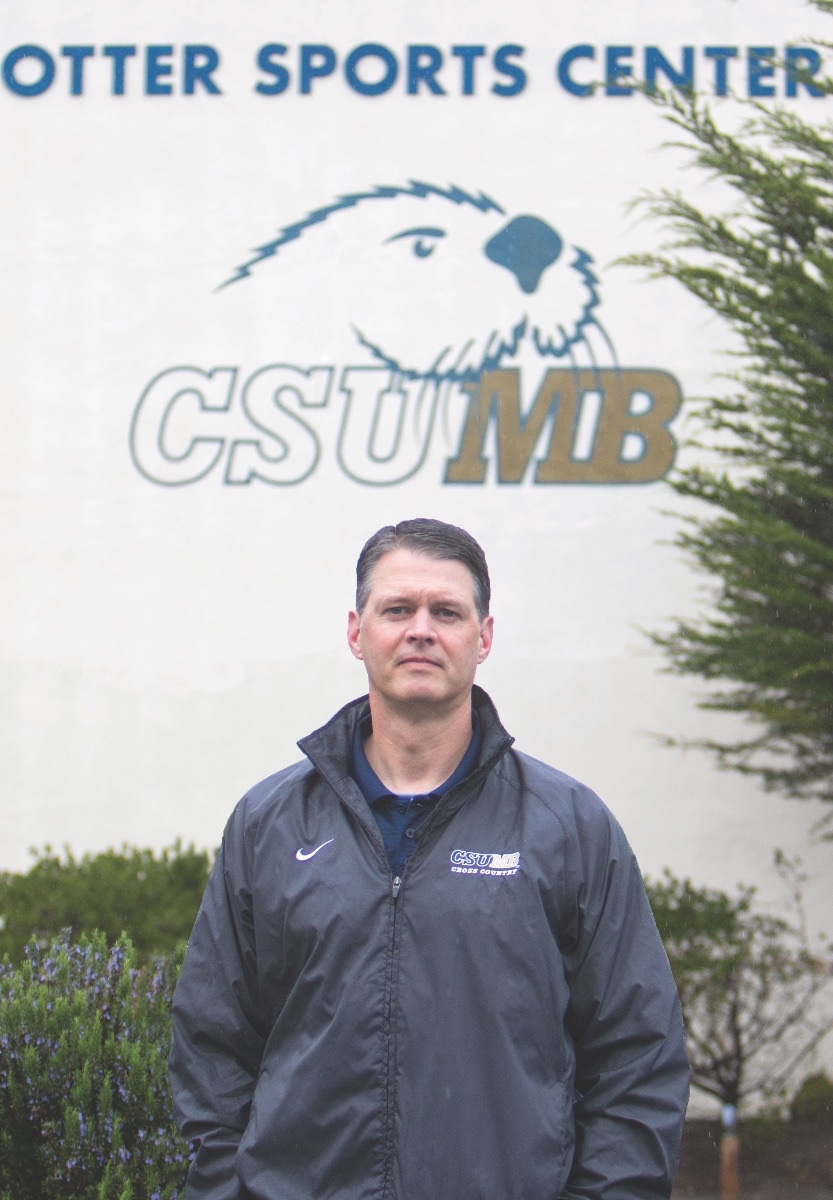CSUMB Magazine
Playing by the Rules

Division I athletics, as administered by the National Collegiate Athletic Association, is well-known – some would say notorious – for a complex and voluminous rule book.
Division II athletics, in which Cal State Monterey Bay competes, is a bit different, according to Greg Harrod, the Otters’ assistant athletics director for compliance.
“In Division II, there aren’t as many rules, but as you can see, it is still over 300 pages,” said Harrod, holding up the book that sits on a prominent place on his desk.
Much of the difference, Harrod said, results from the far higher financial stakes that are in play in major college athletics.
Tight limits
“The more money that’s involved, the more trouble you can get into. Most schools at this level don’t have enough money to get into a lot of trouble. We’re not paying players, we’re not going out and renting cars for them, we just don’t do that,” said Harrod, who was a track athlete during his college days at Pittsburg State University.
As opposed to the complex Division I calendar, which spells out “dead periods,” “quiet periods,” “contact periods” and “evaluation periods,” Harrod said, “Division II is much more straightforward. Basically, we have times we can watch a kid but not talk to him, but other than that, it is a free for all.”
Division II athletics have tight limits on total number of scholarships in each sport: almost all scholarships awarded are partial ones.
“We have to go out and see more kids, because we are not offering a full scholarship,” Harrod said. “We have to cast a wider net, because there is so much competition to get those athletes.”
I think in 10 years, people aren’t going to recognize what Cal State Monterey Bay has become.— Greg Harrod
Meanwhile, Division II squads typically have only a head coach and perhaps an assistant to cast that net.
“For the coaches, (recruiting) is their second full-time job,” Harrod said. “In Division I (football), you probably have 10 or 15 guys looking at film, and saying we want to talk with this guy and then you send one of your assistants out to do that. Our coaches do it all on their own.
“For example, right now it is baseball and softball season. So, not only do our coaches run practices every day with games on weekends, they also spend some weeknights on the road watching junior college and high school games.”
Figuring it out
Under Division II rules, CSUMB is required to maintain extensive records on recruiting contacts and how much time Otter athletes spend each week in practices and games.
The issues that arise tend to be “just weird mishaps. We send the wrong email to a kid; it was too early, he was only a (high school) sophomore and the coach thought he was a junior,” Harrod said.
“I also look at a lot of eligibility stuff. A lot of our teams are junior college transfer heavy, so I spend a lot of time looking at junior college transcripts, figuring out, ‘Does this kid have enough hours? Did he take too many PE classes?’” said Harrod.
New beginning
He came to CSUMB in 2014 after working at McMurry University in Texas. The administration was planning to move the university from Division III to Division II, which would require a full-time compliance director. However, when new leadership decided to stick with Division III, Harrod went job hunting.
He sounds glad to have landed where he did.
“I have no reason to want to be anywhere else. One of the things that appealed to me when I got here is that right now, this school is still at the beginning. I think in 10 years, people aren’t going to recognize what Cal State Monterey Bay has become,” Harrod said.
“In 10 years or so, hopefully we will be at 12,000 students and be one of the premier state schools.”